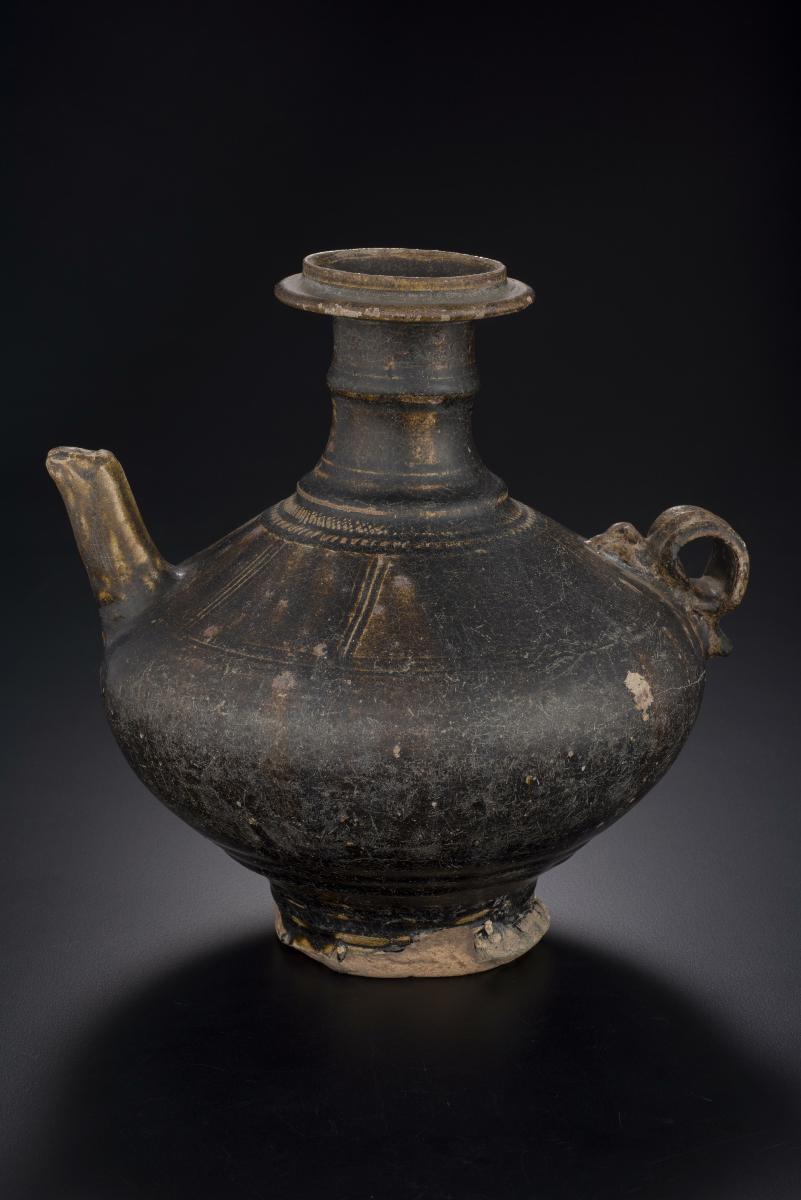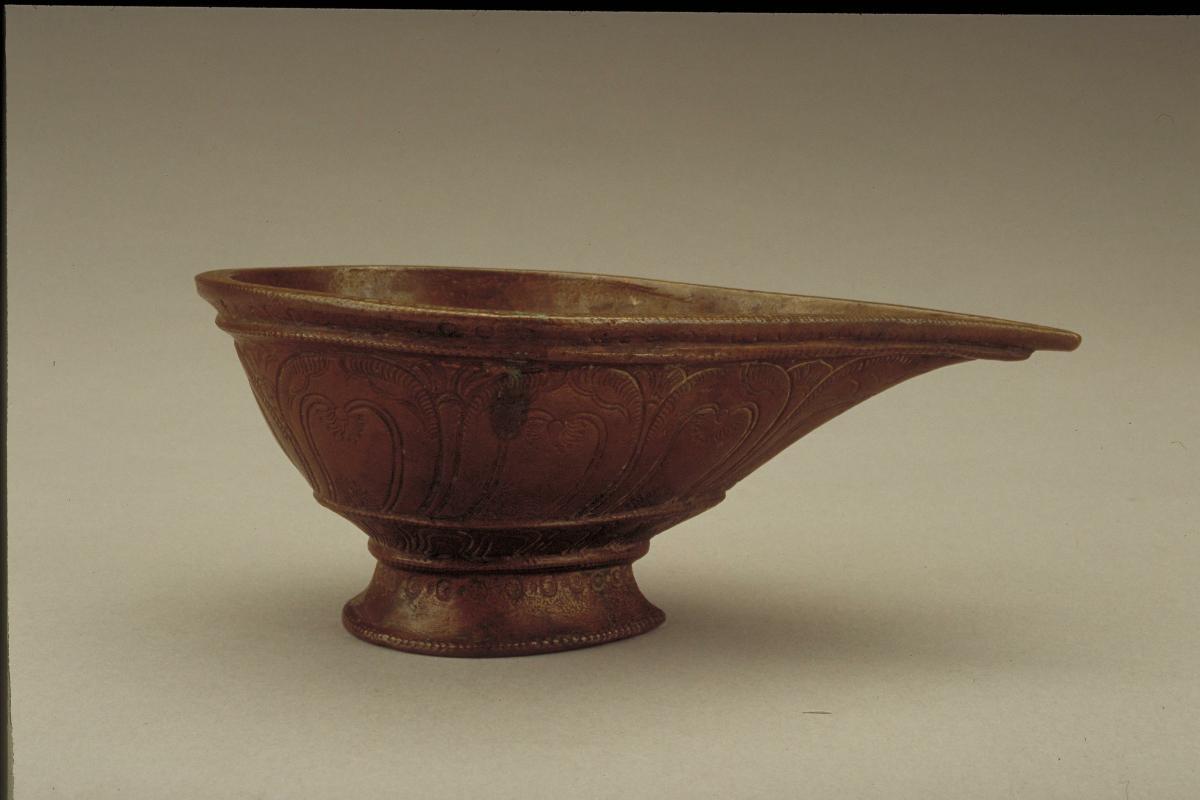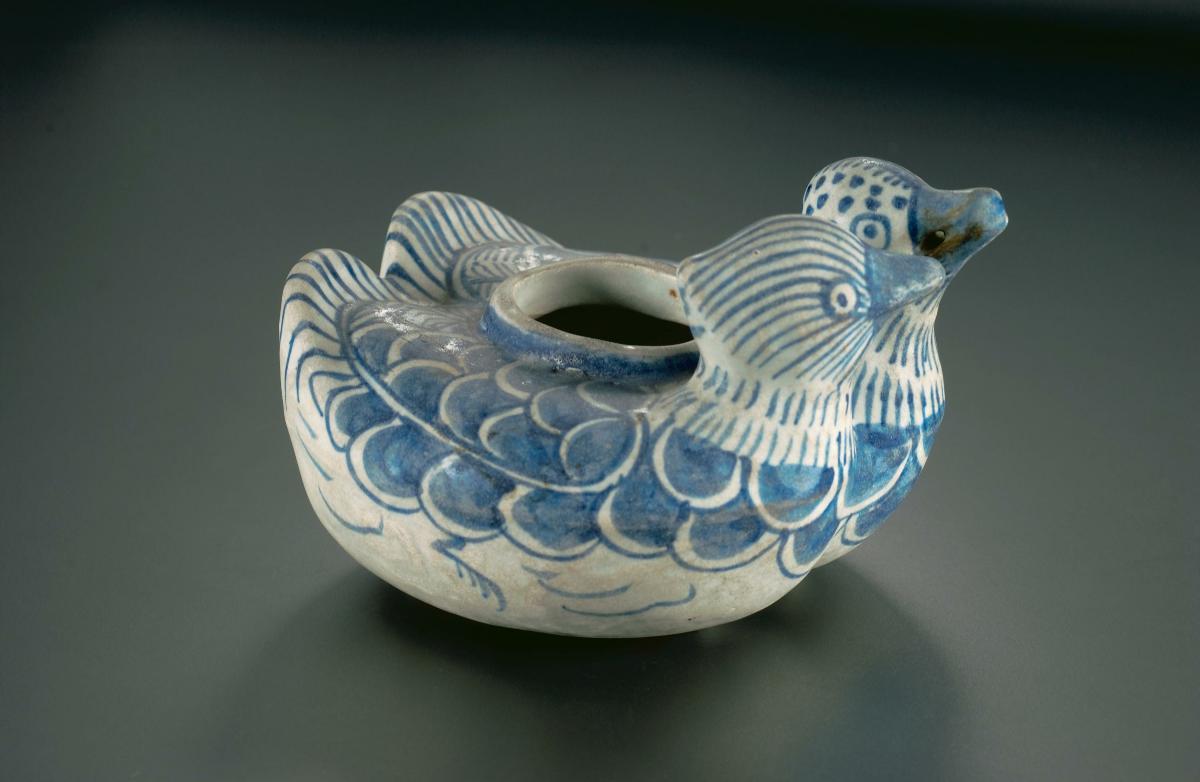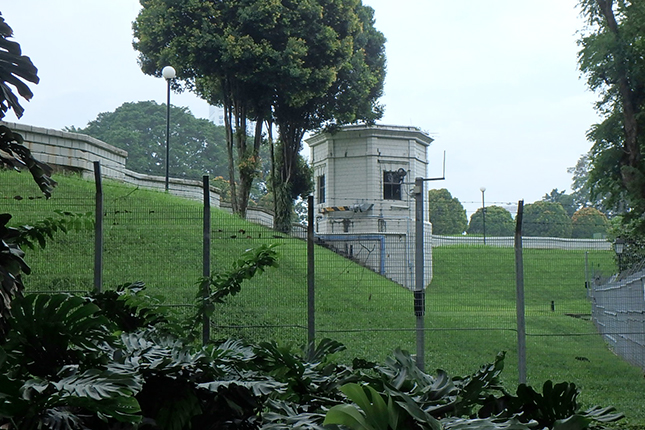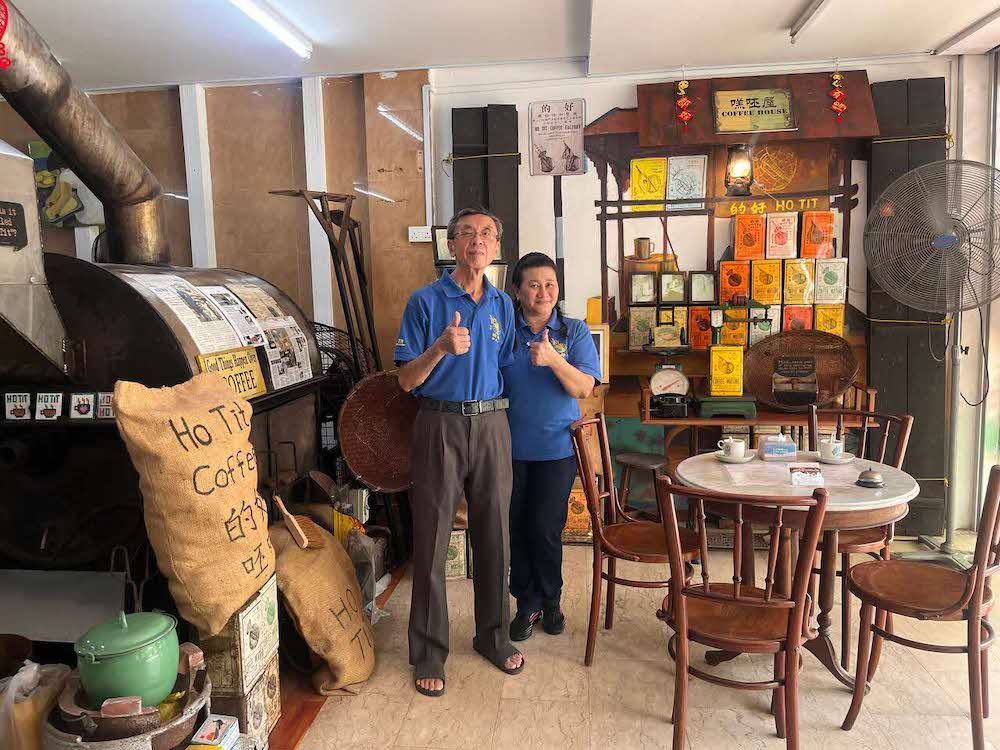x Body: Dia22.5,
x Mouth: Dia8.3 cm
This pouring vessel is a Khmer kendi with flanged mouth, tubular neck, ovoid body, ring handle and straight spout. It is covered with dark brown glaze which stops short of foot. The body and neck is decorated with a few incised concentric circles.It may have served a ritualistic role such as holding ritual water as well as a functional purpose such as a water carrier for travelling.Kendi is a Malay term derived from the Sanskrit word ‘kundika’, a small ritual pouring vessel. A typical kendi has a bulbous body, a neck which is used for holding the vessel and a spout. The tradition of using kendi in Hindu-Buddhist rituals suggests that this type of vessel originated from India. Kendi have been used in Southeast Asia for at least a thousand years, as indicated by depictions on temple wall reliefs dating back to 9th century CE.




